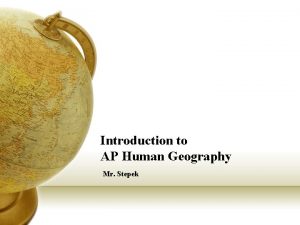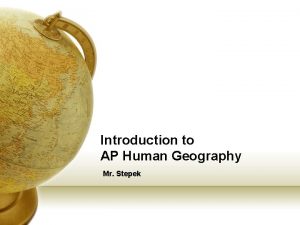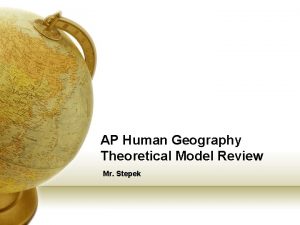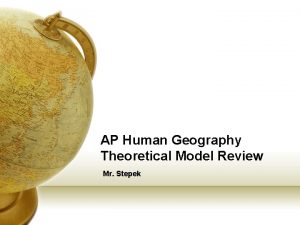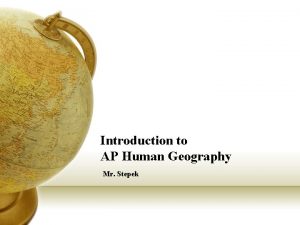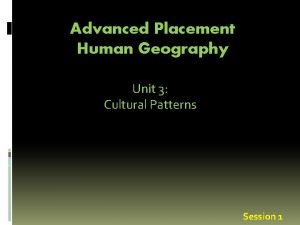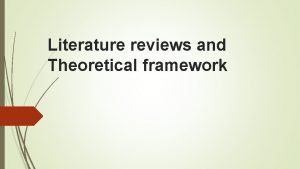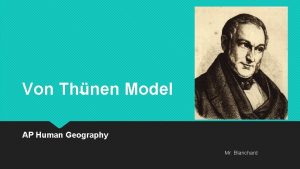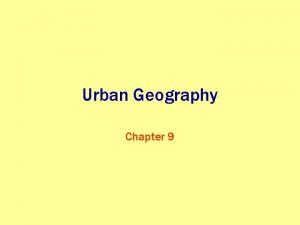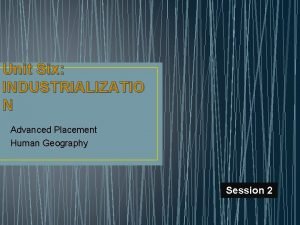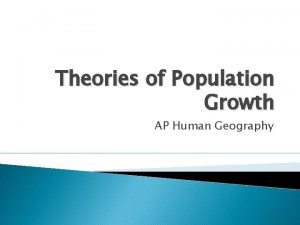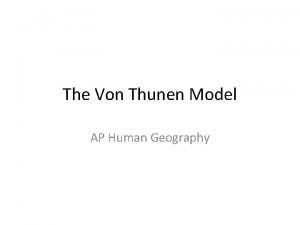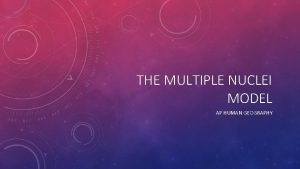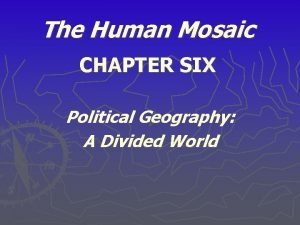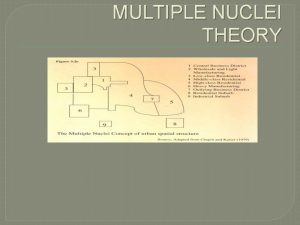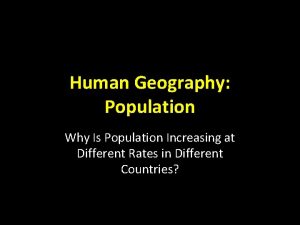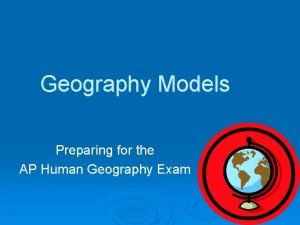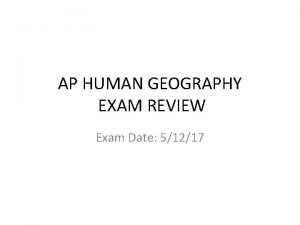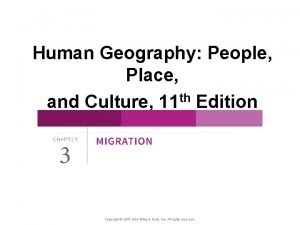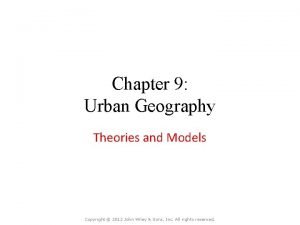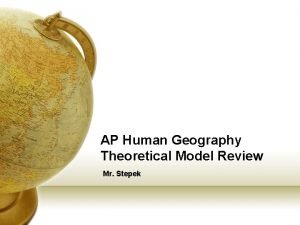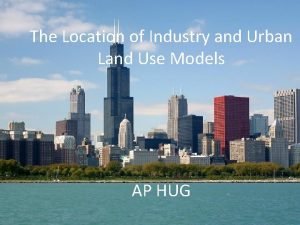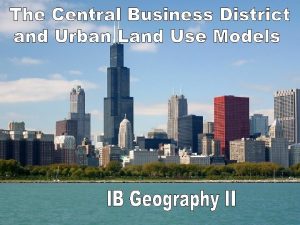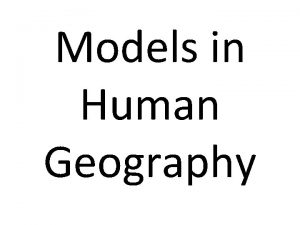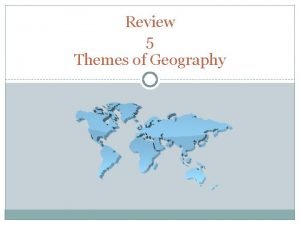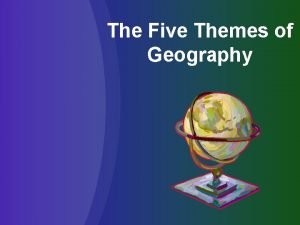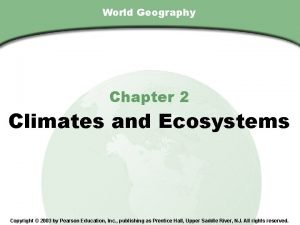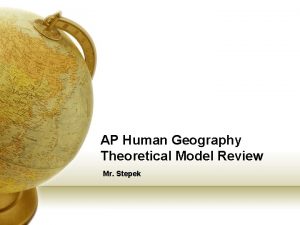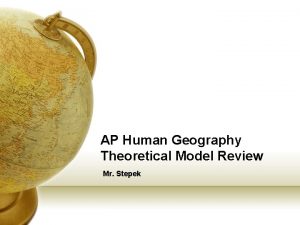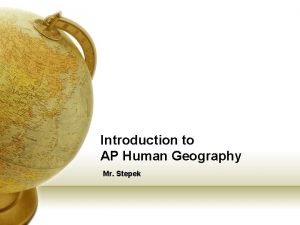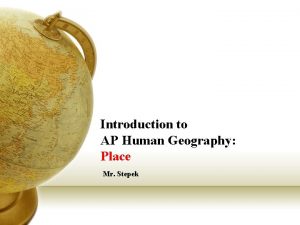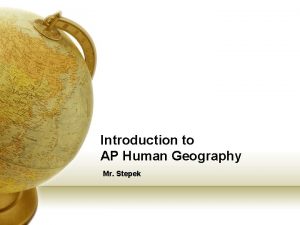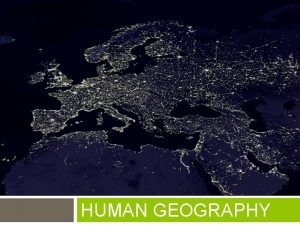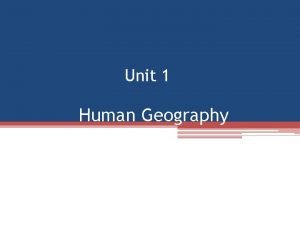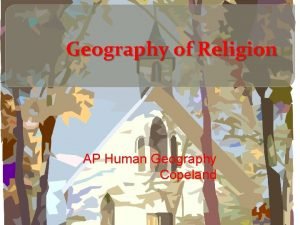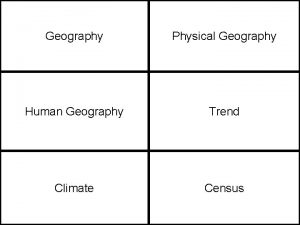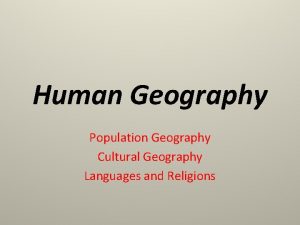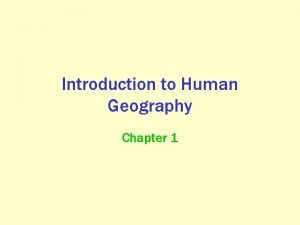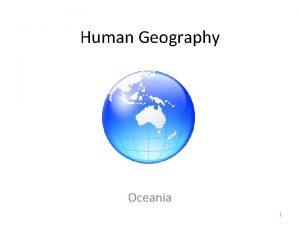AP Human Geography Theoretical Model Review Mr Stepek








































- Slides: 40

AP Human Geography Theoretical Model Review Mr. Stepek

Unit 1: Basic Geographic Concepts

Five Themes of Geography • • • Location Place Region Movement Interaction • How do I remember this analytical structure? • Use an acronym • MR LIP!

Location • geospatial technologies • Differentiate between global positioning systems (GPS) GIS, remote sensing, • fieldwork, census data, online data, aerial photography, and satellite imagery, quantitative vs. qualitative data • absolute vs. relative location

Place • site (physical/demographic characteristics, land, labor, capital) • situation (why is this important? How is it connected to other places? )

Toponyms

Distance Decay and the Gravity Model Distance Decay ½ of Gravity Model (measures interconnectedness, for example migration between cities)

Gravity Model in action • If you were relocating from Peoria, would you choose NYC or Chicago? • Chicago due to distance • If you were relocating from Peoria, would you choose Chicago or St. Louis? • Chicago due to size

Region • differentiate between types of regions • formal/uniform = common characteristics (political units etc. )

Region • differentiate between types of regions • Functional/nodal = region serves a purpose (e. g. hinterland in CPT)

Region • differentiate between types of regions • Perceptual/vernacular = indefinite, based on perceptions (neighborhoods)

Region • understand the regions of the world and their general demographic and development characteristics

Movement = Diffusion

Stimulus Diffusion = the underlying concept is adopted but not the final product. Significant changes are made.

Human – Environmental Interaction • Cultural Ecology by Carl O. Sauer • Cultural landscapes are comprised of the “forms superimposed on the physical landscape” • agriculture and domestication of plants and animals had an effect on the physical environment • Agricultural hearths • root plants = SE Asia • seed plants, cities/civilization = fertile crescent • River Valley Hearths and Mesoamerica • Experiments occur in lands of plenty


Human – Environmental Interaction • Cultural Ecology by Carl O. Sauer • Cultural landscapes are comprised of the “forms superimposed on the physical landscape” • agriculture and domestication of plants and animals had an effect on the physical environment • Agricultural hearths • root plants = SE Asia • seed plants, cities/civilization = fertile crescent • River Valley Hearths and Mesoamerica • Experiments occur in lands of plenty • concern about the way that modern capitalism and centralized government were destroying the cultural diversity and environmental health of the world

Uniform Landscape = Placelessness

Human – Environmental Interaction • Cultural Ecology by Carl O. Sauer • Cultural landscapes are comprised of the “forms superimposed on the physical landscape” • agriculture and domestication of plants and animals had an effect on the physical environment • Agricultural hearths • root plants = SE Asia • seed plants, cities/civilization = fertile crescent • River Valley Hearths and Mesoamerica • Experiments occur in lands of plenty • concern about the way that modern capitalism and centralized government were destroying the cultural diversity and environmental health of the world • Environmental determinism vs. possibilism

Unit 2: Population and Migration

Demographic Transition (Thompson) • Shift in population growth typically experienced by countries as they develop (HDI and GII) • Gender, gender!!!!!!! • Population pyramids • Dependency ratios • Epidemiological transition • Demographic trap • Demographic momentum • Migration transition (Zelinsky) • Demographic indicators • CBR, CDR, NIR (RNI), ZPG, TFR, IMR, life expectancy


Malthus on overpopulation • Population grows exponentially • Food supplies grow arithmetically • Population will overtake supply leading to famine • The poor are responsible for their plight because they have too many children • Famines and disease will be a check on their population

Malthusian updated • • Critics Neo-Malthusians Pop. growth → more hands in • Demographic trap (LDCs) intensive farming ↑ food – Boserup and other resource More pop. → more minds → more depletion (water, energy) innovation to solve problems – • Density measures Kuznets • Arithmetic there’s enough but it’s not distributed • Physiological fairly - Marxists • Agricultural Green Revolution • Starts in US Midwest • Higher yield seeds • GMOs • Better fertilizer, machines • Biggest impact: • India, China


Migration Transition (Zelinsky) • Migration patterns linked to stages of demographic transition • Stage 2 • Rapid population growth • Great Migration • Interregional migration • “urbanization” • Internat’l out-migration • Stage 3 and 4 • Maturing economies • Interregional migration • slower urbanization • suburbanization • Internat’l in-migration


Migration Transition (Zelinsky) • Migration patterns linked to stages of demographic transition • Stage 2 • Rapid population growth • • Interregional migration • • “urbanization” • • Internat’l out-migration • • Stage 3 and 4 • • Maturing economies • Interregional migration • slower urbanization • Intra = suburbanization • Internat’l in-migration Great Migration Brain drain Guest workers Counterurbanization Major immigration flows

Major Global Migration Flows (before 1950)




Ravenstein’s “Laws of Migration” Laws 1. 2. 3. 4. 5. Each migration flow has a return or “countermigration” Mostly short distance Longer distance migrants to big cities Urban residents are less migratory Young single males more likely than families Terms • circulation vs. migration

Ravenstein’s “Laws of Migration” Laws 1. 2. 3. 4. 5. Each migration flow has a return or “countermigration” Mostly short distance Longer distance migrants to big cities Urban residents are less migratory Young single males more likely than families Terms • • circulation vs. migration push/pull factors step migration Intervening opportunities/obstacles • chain migration • immigration waves • gravity model (population and distance)

Sample FRQ Question

Sample FRQ Question Rubric

Sample FRQ Question

Sample FRQ Question Rubric

Sample FRQ Question

Sample FRQ Question Rubric
 Mr stepek
Mr stepek Stepek ap human geo
Stepek ap human geo Multiculturalism definition ap human geography
Multiculturalism definition ap human geography Stepek ap human geo
Stepek ap human geo Ap human geography
Ap human geography Ap human geography frq format
Ap human geography frq format 5 themes of geography ap human geography
5 themes of geography ap human geography Stateless nation
Stateless nation Migrant diffusion
Migrant diffusion Human development index definition ap human geography
Human development index definition ap human geography Theoretical framework in literature review
Theoretical framework in literature review Von thunen’s model definition ap human geography
Von thunen’s model definition ap human geography Edge city ap human geography
Edge city ap human geography Modernization model ap human geography
Modernization model ap human geography Ernst ravenstein ap human geography
Ernst ravenstein ap human geography Von thunen model definition
Von thunen model definition Multiple nuclei model ap human geography example
Multiple nuclei model ap human geography example Cleavage model ap human geography
Cleavage model ap human geography Harris and ullman theory
Harris and ullman theory Mobility definition ap human geography
Mobility definition ap human geography Demographic transition model ap human geography
Demographic transition model ap human geography Mixed land use definition ap human geography
Mixed land use definition ap human geography Multiple nuclei model ap human geography
Multiple nuclei model ap human geography Demographic transition model ap human geography definition
Demographic transition model ap human geography definition Borchert's epochs ap human geography definition
Borchert's epochs ap human geography definition Gravity model ap human geography
Gravity model ap human geography Southeast asian city model definition ap human geography
Southeast asian city model definition ap human geography Brandt line ap human geography definition
Brandt line ap human geography definition Location
Location Cbd burgess model
Cbd burgess model Core periphery model
Core periphery model World history and geography final exam study guide
World history and geography final exam study guide Taj mahal relative location
Taj mahal relative location 5 themes of geography review game
5 themes of geography review game World geography chapter 2 review answers
World geography chapter 2 review answers Chapter review motion part a vocabulary review answer key
Chapter review motion part a vocabulary review answer key Ap gov final review
Ap gov final review Nader amin-salehi
Nader amin-salehi What is inclusion and exclusion
What is inclusion and exclusion Narrative review vs systematic review
Narrative review vs systematic review Whats round robin
Whats round robin
